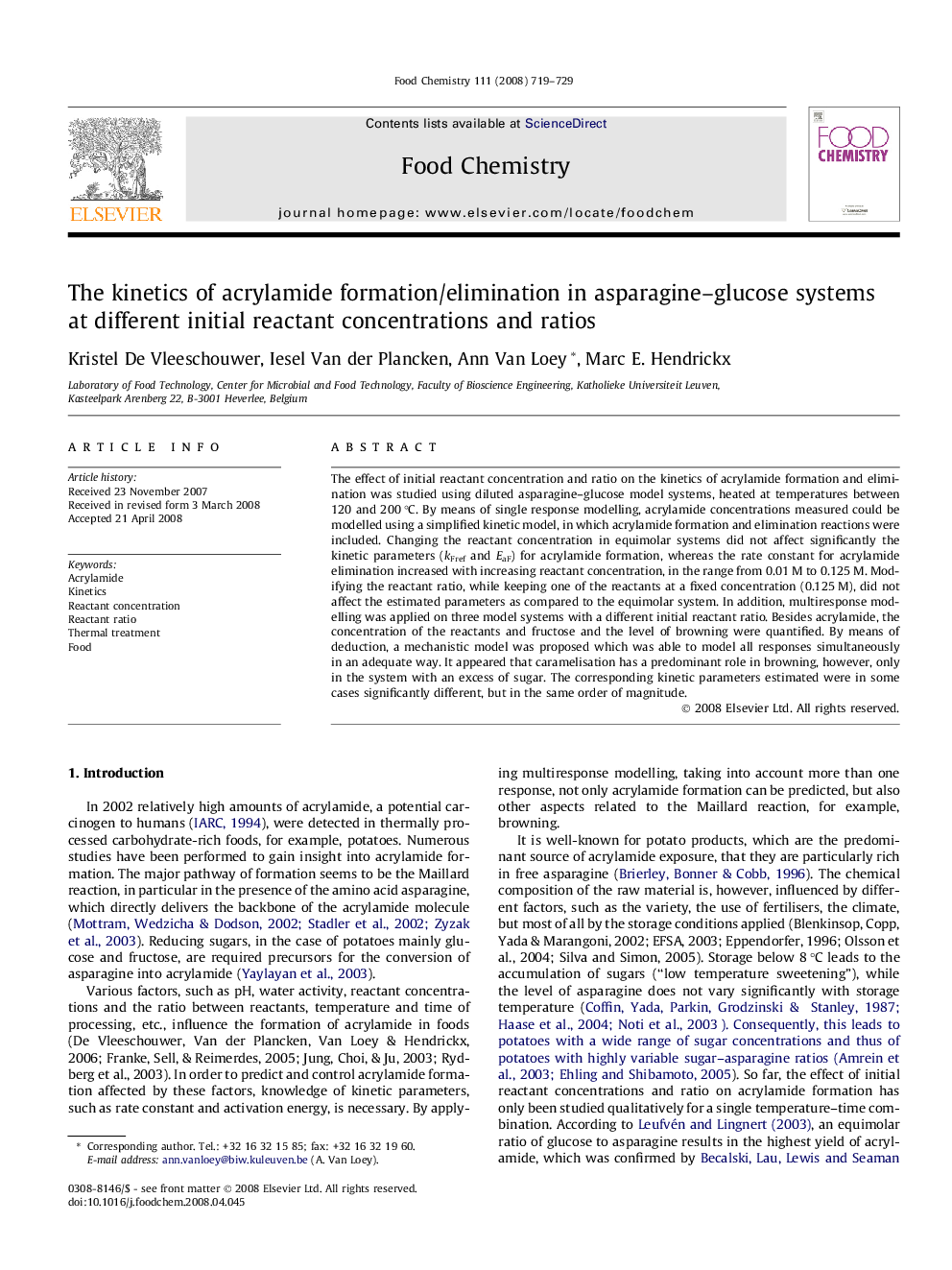| Article ID | Journal | Published Year | Pages | File Type |
|---|---|---|---|---|
| 1187939 | Food Chemistry | 2008 | 11 Pages |
The effect of initial reactant concentration and ratio on the kinetics of acrylamide formation and elimination was studied using diluted asparagine–glucose model systems, heated at temperatures between 120 and 200 °C. By means of single response modelling, acrylamide concentrations measured could be modelled using a simplified kinetic model, in which acrylamide formation and elimination reactions were included. Changing the reactant concentration in equimolar systems did not affect significantly the kinetic parameters (kFref and EaF) for acrylamide formation, whereas the rate constant for acrylamide elimination increased with increasing reactant concentration, in the range from 0.01 M to 0.125 M. Modifying the reactant ratio, while keeping one of the reactants at a fixed concentration (0.125 M), did not affect the estimated parameters as compared to the equimolar system. In addition, multiresponse modelling was applied on three model systems with a different initial reactant ratio. Besides acrylamide, the concentration of the reactants and fructose and the level of browning were quantified. By means of deduction, a mechanistic model was proposed which was able to model all responses simultaneously in an adequate way. It appeared that caramelisation has a predominant role in browning, however, only in the system with an excess of sugar. The corresponding kinetic parameters estimated were in some cases significantly different, but in the same order of magnitude.
